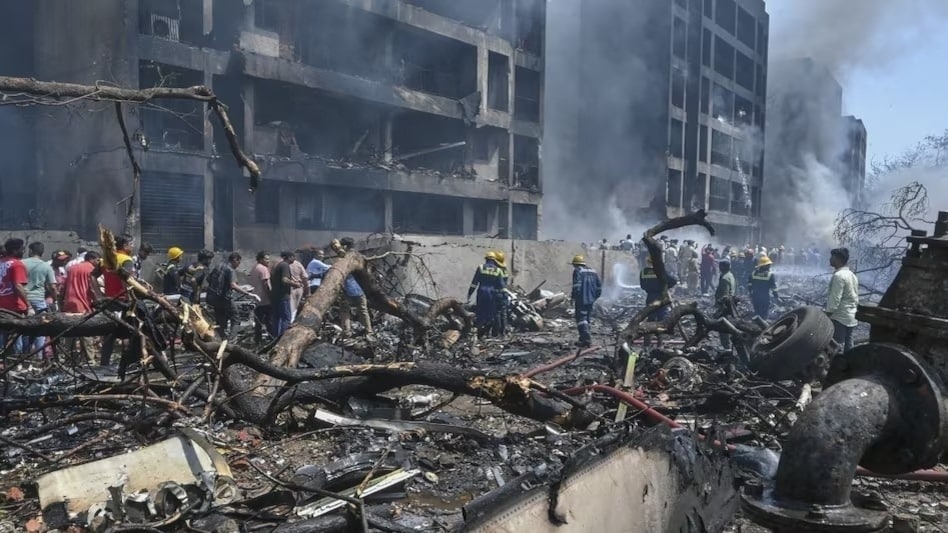 Air India plane crash: AAIB black box laboratory may require advanced technology upgrade
Air India plane crash: AAIB black box laboratory may require advanced technology upgrade
 Air India plane crash: AAIB black box laboratory may require advanced technology upgrade
Air India plane crash: AAIB black box laboratory may require advanced technology upgradeThe Ministry of Civil Aviation has denied reports that the black boxes from the Air India plane crash are being sent overseas. The “Black Box Lab” under India’s Civil Aviation Ministry is currently analysing the flight data recorder and cockpit voice recorder retrieved from the wreckage of the ill-fated Air India AI-171 flight.
In April this year, Union Civil Aviation Minister Ram Mohan Naidu inaugurated the state-of-the-art Digital Flight Data Recorder and Cockpit Voice Recorder (DFDR & CVR) Laboratory at the Aircraft Accident Investigation Bureau (AAIB) at Udaan Bhawan, New Delhi.
Commonly referred to as the “Black Box Lab,” the facility was established with an investment of Rs 9 crore and developed with the support of Hindustan Aeronautics Limited (HAL). The lab was designed to house advanced infrastructure for analysing black boxes and investigating aircraft incidents with precision.
The lab’s primary objective is to repair damaged flight recorders, retrieve critical data, and correlate findings using multiple sources, including cockpit voice recordings, radar data, and flight performance parameters. Designed to meet international standards, the lab was expected to significantly enhance the quality and independence of aircraft accident investigations in India, in line with the country’s obligations as a member of the International Civil Aviation Organization (ICAO).
It was earlier reported that the AAIB laboratory may require an advanced technology upgrade amidst reports that the black box of the crashed Air India flight will now be sent to the US-based National Transportation Safety Board (NTSB) for analysis. The home laboratory reportedly didn’t have the capacity to extract data from recorders that have sustained such heavy damage.
To this, the Ministry of Civil Aviation (MoCA) said: "It has been reported in certain media outlets that the CVR/DFDR from the ill-fated AI171 flight is being sent abroad for retrieval and analysis. The decision regarding the location for decoding the flight recorders will be taken by the AAIB after due assessment of all technical, safety, and security considerations. The Ministry of Civil Aviation urge all stakeholders to refrain from speculation on such sensitive matters and to allow the investigative process to proceed with the seriousness and professionalism it warrants."
"If a need arises and the technology to decode the recorder is unavailable in our lab, then we may send it abroad for further investigations," a MoCA official said.
The formal inquiry into the tragic crash of Air India Flight AI171 near Ahmedabad is currently being conducted by the Aircraft Accident Investigation Bureau (AAIB). The investigation began on June 12, 2025, with a diverse team from AAIB working alongside experts from the US National Transportation Safety Board (NTSB) and original equipment manufacturers (OEM), in adherence to International Civil Aviation Organization (ICAO) protocols.
Investigators have recovered two sets of black boxes from the wreckage of the Air India flight AI-171 that crashed shortly after takeoff in Ahmedabad on June 12, killing all 241 people on board and dozens on the ground. The first set of recorders was located on June 13, followed by the second on June 16.
The ill-fated aircraft, a Boeing 787-8 Dreamliner, was equipped with dual black box systems—each comprising a Digital Flight Data Recorder (DFDR) and a Cockpit Voice Recorder (CVR). These components are considered critical in reconstructing the final moments before the crash, with the DFDR logging key flight metrics like altitude, airspeed, and engine thrust, while the CVR captures cockpit audio, including crew communication and warning alerts.
Authorities believe that analysis of this flight data will be central to identifying the root cause of the fatal crash, which occurred mere seconds after the aircraft lifted off from the runway. Investigators are hopeful that the recordings will offer insights into any technical anomalies, human errors, or external factors that may have contributed to the disaster.
In line with global aviation protocols established by the International Civil Aviation Organization (ICAO), a preliminary investigation report is expected to be released within 30 days, followed by a detailed final report within a year. The investigation is likely to examine a wide range of factors—including mechanical failure, weather conditions, and possible lapses in pre-flight checks. The presence of redundant black box systems is expected to strengthen the accuracy of the analysis, especially given the extensive damage to the primary recorders.